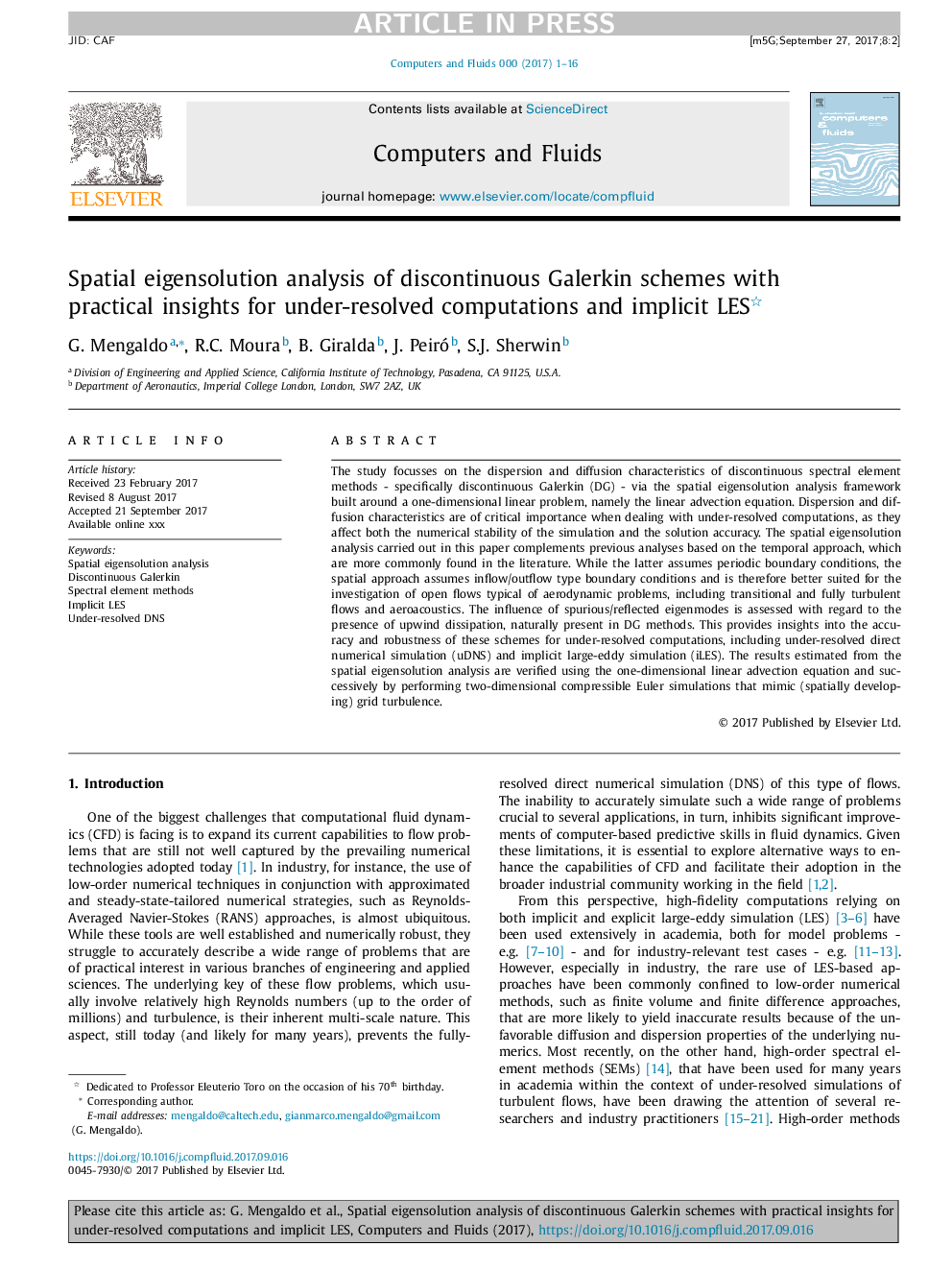| Article ID | Journal | Published Year | Pages | File Type |
|---|---|---|---|---|
| 7156122 | Computers & Fluids | 2018 | 16 Pages |
Abstract
The study focusses on the dispersion and diffusion characteristics of discontinuous spectral element methods - specifically discontinuous Galerkin (DG) - via the spatial eigensolution analysis framework built around a one-dimensional linear problem, namely the linear advection equation. Dispersion and diffusion characteristics are of critical importance when dealing with under-resolved computations, as they affect both the numerical stability of the simulation and the solution accuracy. The spatial eigensolution analysis carried out in this paper complements previous analyses based on the temporal approach, which are more commonly found in the literature. While the latter assumes periodic boundary conditions, the spatial approach assumes inflow/outflow type boundary conditions and is therefore better suited for the investigation of open flows typical of aerodynamic problems, including transitional and fully turbulent flows and aeroacoustics. The influence of spurious/reflected eigenmodes is assessed with regard to the presence of upwind dissipation, naturally present in DG methods. This provides insights into the accuracy and robustness of these schemes for under-resolved computations, including under-resolved direct numerical simulation (uDNS) and implicit large-eddy simulation (iLES). The results estimated from the spatial eigensolution analysis are verified using the one-dimensional linear advection equation and successively by performing two-dimensional compressible Euler simulations that mimic (spatially developing) grid turbulence.
Related Topics
Physical Sciences and Engineering
Engineering
Computational Mechanics
Authors
G. Mengaldo, R.C. Moura, B. Giralda, J. Peiró, S.J. Sherwin,
